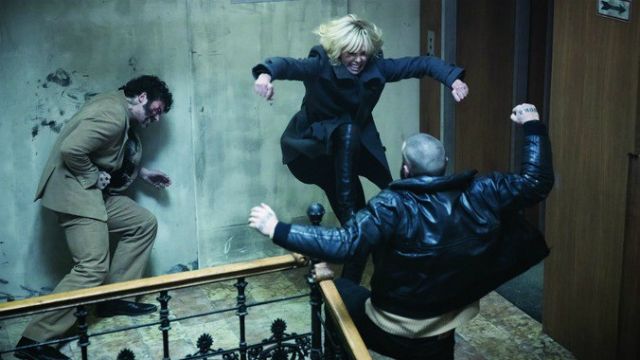“Atomic Blonde”, the new spy thriller from actress/producer Charlize Theron and the creative team behind “John Wick”, literally explodes on screen in almost every way fans of the genre could possibly hope for.
The film immerses audiences in a stylish, supercharged vision of the classic Bond-style caper, one that follows the genre’s conventions to a “T” while at the same time turning them on their ear by placing Theron in the lead.
When combined with jaw-dropping action sequences, innovative camera-work and a pitch perfect retro-cool soundtrack, it all results in a cinematic cocktail that’s sure to leave audiences shaken and stirred.
What’s it about?
The name’s Broughton. Lorraine Broughton.
October 1989. British Intelligence sends Broughton (Theron), one of its most capable and lethal operatives, into Berlin to investigate the death of an asset and retrieve an item of interest that the asset was carrying.
Sounds simple enough, right? Except that in what would be the final days of the Berlin Wall, nothing was ever simple, especially for a spy navigating the complicated and conflicting agendas of MI6, the CIA, the Soviet KGB and other European intelligence agencies.
To help her complete the mission, Broughton’s bosses point her to David Percival (James McAvoy), their chief of station for Berlin. A survivor and master manipulator, Percival has found a way during his time in Berlin to stay alive and thrive as an information broker, and thus has his own interest in the prize Broughton’s after.
From the moment she lands in Berlin, Broughton finds herself a target. It seems the entire alphabet soup of intelligence agencies with operatives in the city wants what she’s after, and wouldn’t mind seeing her dead or disappeared in the process.
As the Wall crumbles, the clock ticks and bullets fly as Broughton is pushed to her limits not just to accomplish the mission, but simply to survive.
Eat your heart out, Bond.

Color and music
Before even the first punch is thrown or bullet fired in “Atomic Blonde,” audiences should be struck by director David Leitch’s stylistic choices in terms of how to paint and present his narrative.
The film’s color palette is dominated by the quintessential colors of the late 1980’s, neon electric blue and pink. Other colors figure prominently, as well – the stark black and white of Theron’s wardrobe throughout the film, and the impersonal and desolate greys found on the streets and in institutional spaces where goals and agendas are anything but black and white.
Just as prominent in the film’s sensory expression is the “Atomic Blonde” soundtrack. Music takes on a life and character of its own in the film, much as it does in this year’s other music-driven hit, “Baby Driver.”
Here, however, the soundtrack is less eclectic and much more tied to the story’s time and place. As such, artists such as David Bowie, Queen, Depeche Mode, Iggy Pop, and, of course, Blondie are all over “Atomic Blonde,” and the film is all the more immersive and vibrant for it.



